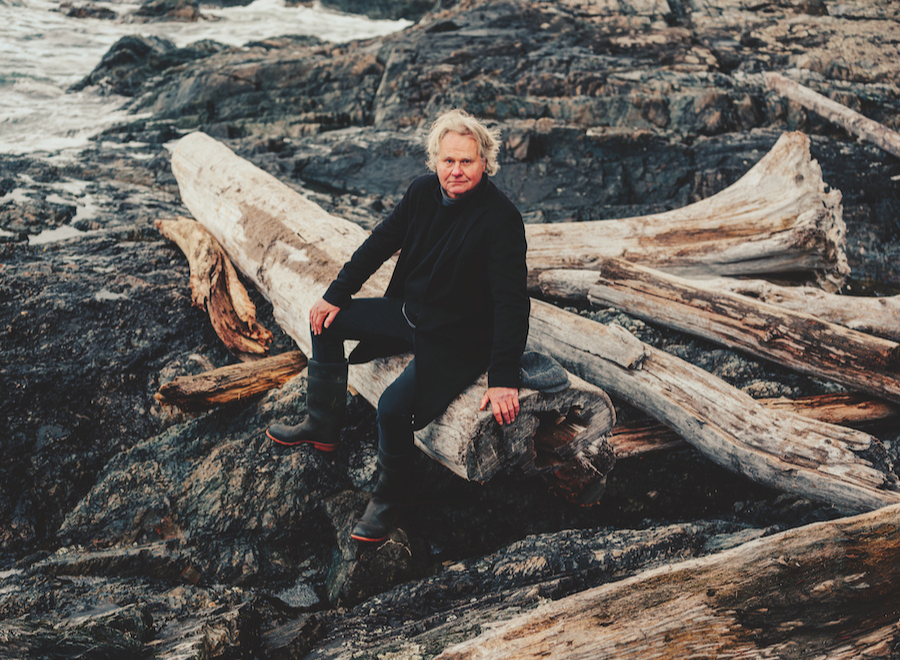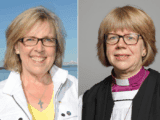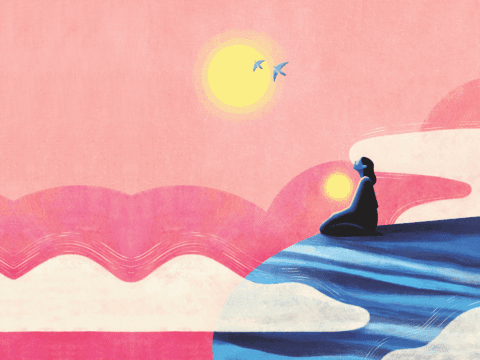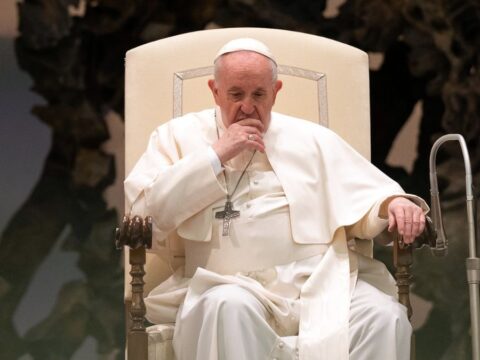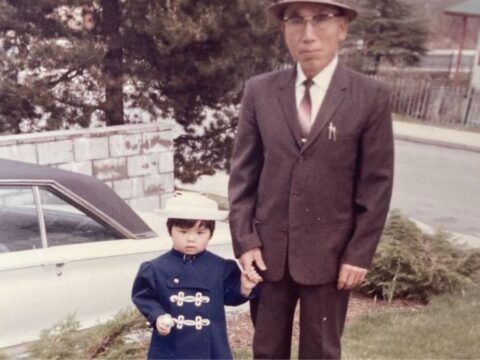Wade Davis was once described by the environmental activist David Suzuki as “a rare combination of scientist, scholar, poet and passionate defender of all life’s diversity.” Davis, an anthropologist, author and filmmaker, is celebrated for his explorations into global cultures and the traditional relationships between people and plants, known as ethnobotany.
In his books and films, the British Columbia native and former explorer-in-residence at the National Geographic Society brings together years of research to highlight the wisdom and cultural richness of societies around the world.
You may unsubscribe from any of our newsletters at any time.
His latest book, Beneath the Surface of Things, draws from this fieldwork to explore the intricacies of our relationships with other humans, the environment and spirituality. Mzwandile Poncana spoke to Davis about this essay collection and in particular his idea of the sacred.
Mzwandile Poncana: In the closing essay of Beneath the Surface of Things, you describe an essential force called “the sacred.” What is it, and what does it mean to you?
Wade Davis: We often confuse the religious with the spiritual or sacred. Religion is basically about belief systems that attempt to understand what happens in the wake of death. Death is the first mystery, the edge beyond which life as we know it ends and wonder begins. How any culture comes to terms with that inexorable and perpetually mysterious moment defines its religious world view. Therefore, most religions come down to some kind of attempt to wrestle with eternity and come out on top.
In that sense, religion is all about death and what happens in the wake of death. The sacred has nothing to do with death. It’s all about the luminous presence of the divine, or of life, or whatever we call it, that unfolds around us all the time. It’s always elusive. It’s intangible. We can’t even know it’s there but the possibility that it is there gives us some kind of comfort.
More on Broadview:
MP: How has your personal history with spirituality, as well as your career in anthropology, informed your idea of what the sacred is?
WD: From the age of five, I, on my own, dutifully walked off to Sunday school every week at a church of my choosing. And I did that for five years, almost without missing a Sunday.
I didn’t go to the church to worship the building, any more than a pilgrim does at the gates of a cathedral. You go into the spiritual space to be in the presence of God. And then one day God wasn’t there, and after that I never entered church in my life as a Christian believer. I came to understand that, in a sense, the sacred is something we will into being.
A temple becomes sacred not from the rocks from which it is built, but rather from the prayers, devotions, hopes and dreams of all those who have sanctified it by their presence. I began to see that what had drawn me to that building was not the religious ideology, but my desire to be in the presence of luminosity. And luminosity, I then realized, was to be found all around.
MP: What can the examination of other cultures teach us about western and European culture?
WD: In the West, we’re living in the legacy of the Enlightenment, which is when we tried to liberate ourselves from the tyranny of absolute faith; when we threw out all ideas of myth, magic, mysticism and metaphor, and “de-animated” the world — or, as the philosopher Descartes would say, we began to see the world as consisting of material objects governed by mechanical laws rather than a world of spirits.
Following the Enlightenment, all that existed was mind and matter. That can, to a great extent, explain the way that we’ve interacted with the natural world for most of modern European history. And the important point to make is this way of thinking is actually highly anomalous, and most cultures around the world base their relationship with the natural world on reciprocity, not extraction.
One of the exciting revelations of genetics — which I mention in the essay “A Message to a Daughter” — is the fact that we have finally proven that we’re all cut from the same genetic cloth. We’re all children of Africa and all descendants of the original humans. There is no hierarchy in culture, no evolutionary ladder to success. This means that the other people of the world aren’t failed attempts at being modern; they’re not failed attempts at being us. Every culture is a unique answer to the fundamental question: what does it mean to be human and alive?
MP: You’ve studied the diversity of human cultures and their relationship to the sacred. What bonds all of the different spiritualities together?
WD: While we can celebrate the differences between cultures, there’s also this amazing commonality rooted in the fact that we’re one species.
I think part of our commonality, beyond the obvious — which is that we all have to deal with the inexorable separation that death implies and not to mention the certainty of death itself — we also all share curiosity and wonder.
Following our burst of awareness, of consciousness, of intellect — whatever it was that separated us from Neanderthals — all of human experience came down to two questions: how and why? And how a culture answers those two questions has always determined its world view. “How” is the answer that science pursues, and “why” is the answer that religion pursues, which is why the two domains aren’t incompatible. With science, we’ve done a good job in moving forward with the question “how.” We haven’t really got that far with “why,” because in a way the “why” question is ultimately unanswerable. And that’s what I’d say the mystery of spiritual intention — the binding of spiritualities — is all about.
MP: In the book, you describe the link between spirituality and nature. For example, there are two Amazonian tribes — Barasana and Makuna — who believe plants and animals are people in another dimension of reality. What have you learned about the relationship between cultural diversity and preserving the natural world?
WD: As a young man who was critical of the logging industry, I decided to see it for myself before I could criticize it. In 1977, I basically lied about my credentials and got hired as a forestry engineer in a B.C. logging camp. One of the things that struck me — aside from the fact that there wasn’t a single decision made by us that had anything to do with environmental concerns whatsoever — was that the men and women who were fighting off hunger or feeding their families with a chainsaw weren’t the enemy.
I developed enormous compassion for men who lived away from their families and spent their lives destroying the most beautiful forest perhaps on the planet.
It became interesting to me to think of how men could do that, and I came away understanding that you can only do that if you completely deanimate that forest and steel your heart to the reality of what one is doing.
This relates to the notion of metaphor: as an anthropologist, I’ve spent a great deal of time in the Andes of southern Peru. I participated in a ritual where all the able-bodied men in the village must run across the boundaries of the community land — crossing mountain ridges and elevated land up to 16,000 feet high. It’s less of a ritual or a race, and more of an ordeal.
The metaphor is that you go into the mountains as an individual, but through exhaustion and sacrifice, you fuse into a single community. The race also crosses a mountain deity.
Ultimately, if a child is raised to believe the mountain is a deity that will direct his or her destiny, they’re going to have a different relationship to it than a Canadian kid raised to believe that a mountain is just a pile of rock waiting to be mined.
The measure of a culture is not just what it does, but the quality of its aspirations, the metaphors that propel it forward and the belief systems that mediate the behaviour of its people.
This interview has been edited and condensed for length and clarity.
***
Mzwandile Poncana is a journalist and writer in Montreal.

